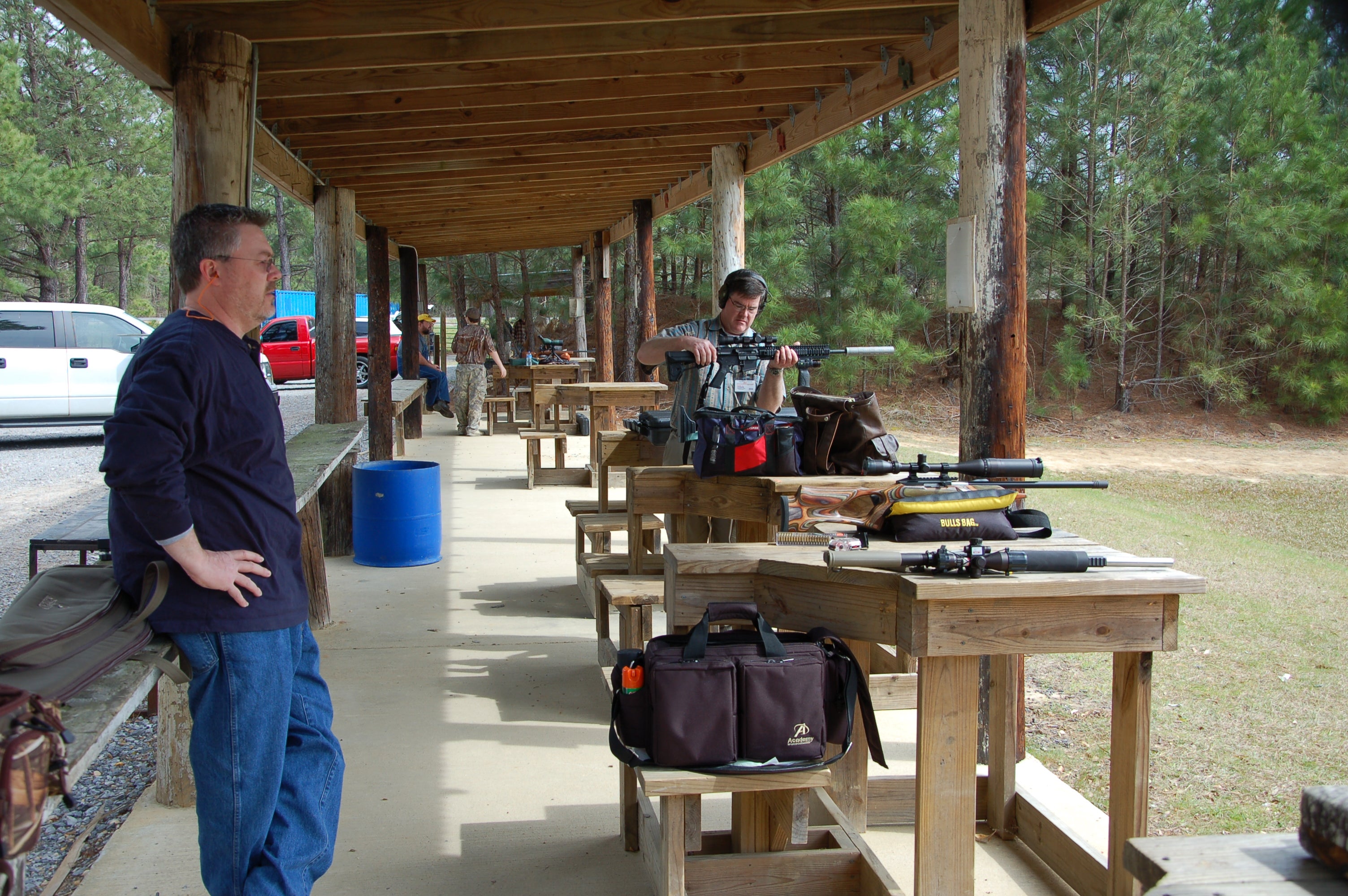Zeroing In Is a Process
Dr. John Woods 09.30.13

So the bug to buy a new hunting rifle has hit you. This is the time of year to find some really good deals on the shelves at local gun shops and at the gun shows. The economy has been tough this summer, so manufacturers and dealers have been running special sales to move inventory.
Some of the manufacturers are offering rebates for buying certain models of hunting rifles. If you need or want a new rifle, this is the time to be shopping well ahead of the coming deer hunting seasons.
So the right deal worked out and you have your new rifle. What now? The dealer probably sold you a new scope, mounts, and rings. He offered to do the mounting for free, and you took him up on the offer. If you trust the dealer and the guy doing the mounting, then go ahead. I prefer to do my own.
After the dealer installed the mounts, rings, and the scope (I hope he squared up the crosshairs and let you check the eye relief on the eye focus end of the scope.), he probably performed a bore sighting on the scope. Now he hands the rifle over to you.
An old next door neighbor dropped by the other day to say he had gotten into deer hunting because his new son-in-law was a hunter and he wanted to bond. He bought a new deer rifle and scope. The dealer installed it all and bore sighted it. To my old neighbor, this meant it was on target and ready to go hunting. The dealer should have educated him better.
He joined a local shooting range and took his new rifle to practice. Being a new shooter and hunter, he knew little about how to sight the rifle in to make sure it was really on target. Hence, he made an honest mistake when he started shooting on the 200 yard range. He was disappointed his new rifle did not even hit the paper target at that range. He was frustrated, gave up, and went home. He asked me to diagnose the situation.
First and foremost, shooters should understand that a bore sight device is designed to mechanically align the scope setting with the bore of the rifle. It is not meant to be a final setting that will make the rifle ready to hunt. It is intended to start the process by getting the rifle printing bullet holes on a paper target at a very short range.
Some shooters prefer to start zeroing in at 100 yards. That’s fine if the rifle prints holes at that range. If you shoot 2-3 strings of 3 rounds each and find no bullet holes, then move the target back to 25 yards. It isn’t a bad idea to start at 25 yards anyway, just for the first three shots, to be sure.
Of course, zeroing in a rifle needs to be done from a steady rest. A shooting bench with a seat is ideal. The shooting range must be a known distance, usually 100 yards. The rifle should be placed on shooting bags, which are usually filled with sand. There are very nice commercial rifle rests on the market now to aid in the zero in process. These units hold or clamp the rifle steady for the shots.
Once you get shots hitting on the paper at 25 yards, adjust the scope to center the shots on the target. Then shoot the rifle at 100 yards. Three shot groups are best. Take your time and aim carefully. Shoot several groups of shots, letting the barrel cool down between each group.
Now check the target. If it is not centered where you want the shots to hit, such as 3 inches high at 100 yards, which is sort of an all purpose zero for high powered cartridges, then move the scope adjustments in the direction you need the shots to move: left, right, up, or down.
Keep shooting groups until you are satisfied with the attained zero.
To further fine tune this process, do a little research on the cartridge you selected for your rifle, such as the .270 Winchester or the 30-06 or whatever. You can get ballistics information for the exact ammunition you are using online at the makers website. Then you can shoot your rifle again if needed.
As a final touch, double check all the mounting screws and rings to be sure they are tight. This process should make you and your new rifle ready to hunt. It should be checked every season or earlier if the rifle was dropped or otherwise jarred.
Remember, bore sighting is just the starting point and not the end of properly zeroing in a rifle with a new scope. Once you can consistently hit the paper targets, you will have the confidence to start targeting that big buck.